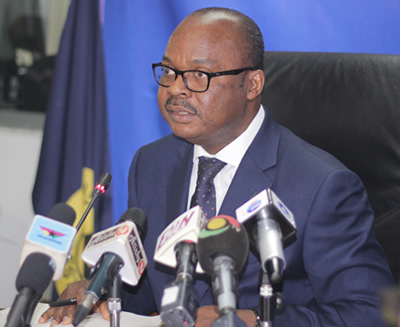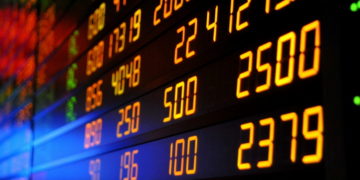The Bank of Ghana’s (BoG) Monetary Policy Committee (MPC) has once again maintained the Monetary Policy Rate (MPR) at 14.5 per cent.
This is the sixth time the MPC will be maintaining the prime rate since its reduction by 150 basis points in March last year.
Announcing the policy rate at the 98th MPC press briefing on Monday, February 1, 2021, Governor of the Bank of Ghana, Dr Ernest Addison noted that “given the balance of risks to inflation and growth, the Committee decided to keep the policy rate at 14.5 percent.”
With no change in the policy rate, lending rates by commercial banks to businesses will remain the same.
Gross International Reserves (GIR), according to the Governor, at end-December 2020 was $8,624.4 million, providing cover for 4.1 months of imports of goods and services compared with end-December 2019 position of $8,418.1 million, equivalent to 4.0 months of import cover.
Also, the current account recorded a deficit of $2.0 billion (3.0 percent of GDP) compared with a deficit of $1.9 billion (2.8 percent of GDP) in 2019 due to the lower trade surplus and higher services outflows which was moderated by the strong remittance inflows of US$3.6 billion and lower net investment income outflows, notably, profits and dividends.
Overall budget deficit end-November 2020, the BoG revealed stood at 10.8 per cent of GDP as against the revised target of 11.4 percent of GDP for 2020.
Primary balance also recorded a deficit of 4.9 percent of GDP which was marginally above the target of 4.8 percent of GDP. Over the review period, total revenue and grants amounted to GH¢46.5 billion (12.1 percent of GDP), marginally higher than the revised target of GH¢46.0 billion (11.9 percent of GDP). Total expenditures and arrears clearance amounted to GH¢88.2 billion (22.9 percent of GDP) against the revised target of GH¢88.4 billion (22.9 percent of GDP).
The elevated fiscal path, Governor Addison further noted, has impacted the stock of public debt which rose to 74.4 percent of GDP (GH¢286.9 billion) at the end of November 2020 compared with 62.4 percent of GDP (GH¢218.2 billion) at the end of December 2019.
Of the total debt stock, domestic debt was GH¢147.3 billion (38.2 percent of GDP), while external debt was GH¢139.6 billion (36.2 percent of GDP).
High frequency indicators of economic activity, Governor Addison noted, had rebounded with consumer and business confidence levels returning to pre-Covid levels.
He however, warned that the renewed threat from the second-wave of the pandemic has again heightened uncertainty and could hamper the recovery process in the near term.








